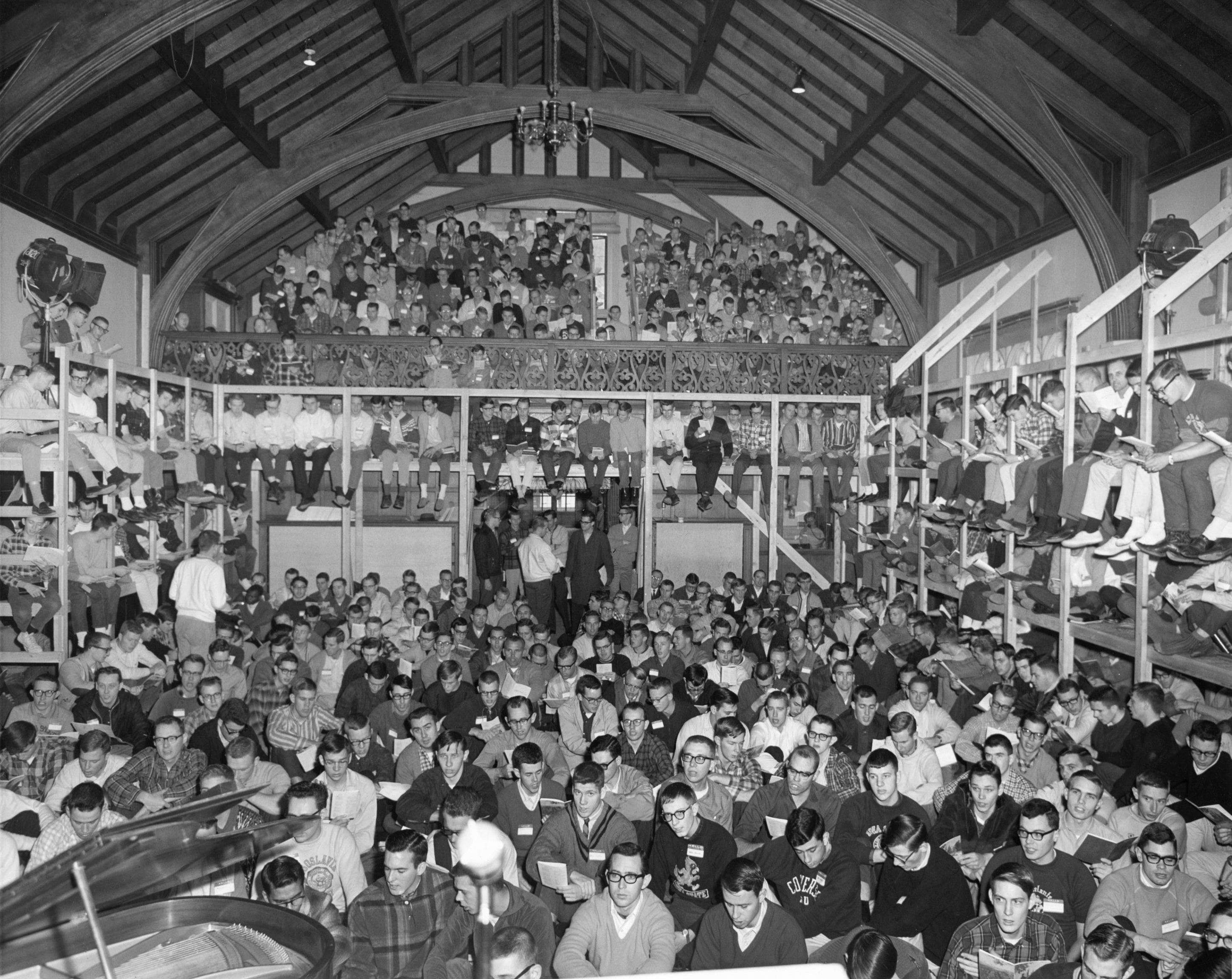We began to put on annual collegiate conferences at Glen Eyrie in 1957, when the target was “college and young business people with a special emphasis on collegiate.”
The amount of “fun” with a Gospel purpose seems to have reached a peak during this period of cooperation between LeRoy Eims and Bob V. . . . Leroy and Bob decided to put together an elaborate performance at Glen Eyrie, once a week, to be known as the Hay Loft Opera, using the upper story of the barn where fodder for the estate’s horses had once been kept. The opera opened with an exciting drama of life on the Mississippi River Queen.
The opera launched in summer 1963, with LeRoy playing Dirty Bert and Bob as Gayelord Ravenall. Music and lyrics were mainly by Ron Oertli and a prominent role was given to Ann Horsford, a British stage actress who had recently come to Christ. A large supporting cast was drawn from the Glen gang. Theater seats were acquired. The production quickly became known as the best show in town, selling out weekly. After each show, refreshments were served outside the barn and a testimony was presented.
The early 1960s were also the era of the Hootenannies. This title was well known in the wider culture because, from April 1963, ABC-TV had a Saturday evening folk singing program called Hootenanny.
It seems likely that the first was put on by Gene and Edie Soderberg in Guelph in October 1963. Bob V. joined them to add energy. At this beginning, one evening was for the men, the next for the women. There were good responses to the short Gospel message.
Not content with the weekly hay loft opera, LeRoy also directed several Whing Dings. The first large one took place in March 1964 in the Great Hall of Glen Eyrie, comprising a weekend of fun and serious teaching for the young collegians attending: 505 men and women filled the Hall. Here’s a small sample of the impact on participants:
- “Trusting God for all that was involved was a real faith-builder for us, but guys began to believe that God was really alive.”
- “Seeing God fulfill His promises and seeing so many men at the Whing Ding who were dedicated to Christ stimulated the guys to really believe God for big things.”
- “The trip was used by the Lord to bring four fellows we took with us to a new life in Christ.”
- “A number of guys decided to let Christ be Lord of their lives and get wholeheartedly involved in accomplishing the job that is on His heart.”
LeRoy expanded the Whing Dings. In the New Year 1966, he aimed for one thousand attendees. John Crawford assured him that this could be done by building a balcony four-tiers high around the walls of the Great Hall which would be “ample seating for a thousand men.” Compared with the previously proposed tent, this was said to be “a plush atmosphere.”
LeRoy wanted women to attend as well, but it was not practicable. This time, 611 men packed the Hall, and the scaffolding held. LeRoy had written to his staff that “the basic purpose of the Whing Ding is to set men on fire for Jesus Christ.” Fortunately, the local Fire Marshal was not informed, because the risk of a physical fire was evident.
Another Whing Ding was held at the YMCA at Estes Park in New Year’s 1967, in piercingly cold temperatures, with Bob Boardman as the keynote speaker. This time, LeRoy reached his goal of more than a thousand participants.
These events, which fitted the cultural moment so well and accelerated the expansion of our collegiate work, were not the only spectaculars that LeRoy put on. For example, there was a Big Basement Bible Blast on Quad B of the Air Force Academy and also some performances in the Bar of the White Horse Inn in Nebraska.
By Donald McGilchrist
Adapted from the Worldwide Partnership article titled “Collegiate Ministries”
